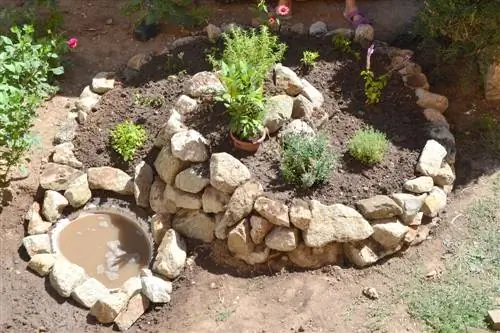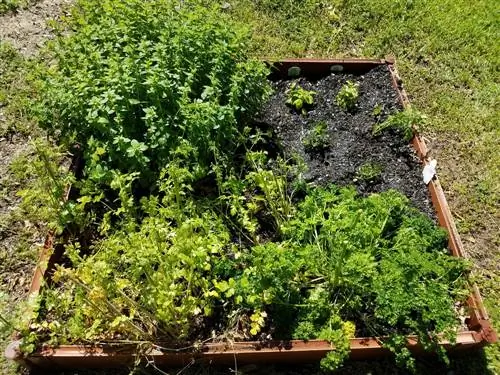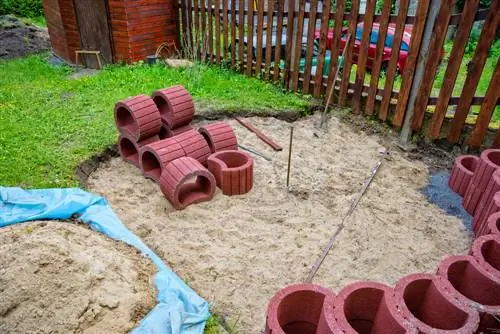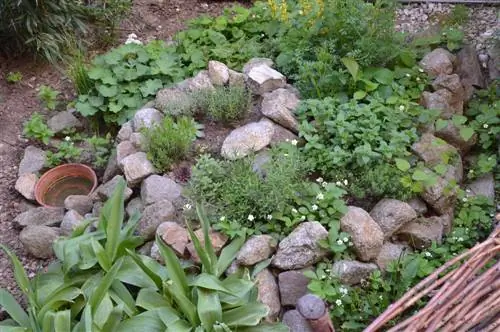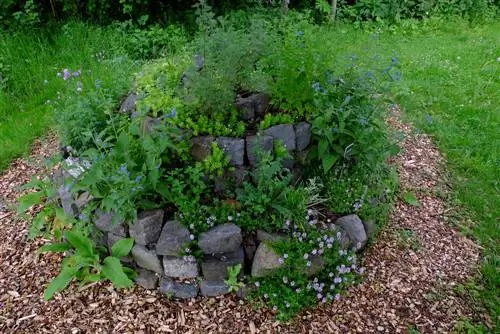- Author admin [email protected].
- Public 2023-12-16 16:46.
- Last modified 2025-06-01 06:02.
In a sunny location with a north-south orientation, the course is set for a herbal spiral with different climate zones. Before you add the finishing touches to the mini biotope with your favorite herbs, the appropriate substrate filling is on the agenda. Here you can familiarize yourself with the right soil for every climate within a herb snail.
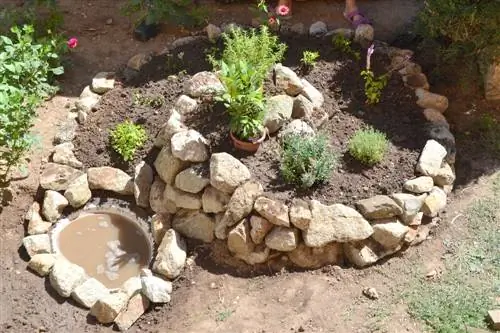
How do you fill a herbal spiral correctly?
In order to properly fill a herb spiral, you should use different substrates for the four climate zones: compost soil for the water area, loamy garden soil and sifted compost in the wet area, a mix of garden soil, compost and sand in the temperate climate area and a mixture of Garden or herb soil and sand in a ratio of 1:1 in the Mediterranean area.
Gravel foundation prevents waterlogging
If you have decided on a dry stone wall to frame your herb spiral, we recommend a foundation made of coarse gravel or gravel. For this purpose, dig the soil to the depth of a spade during construction and fill in a layer of gravel about 10 cm high. This measure gives a natural stone wall additional stability. In addition, the granular material acts as a useful drainage to protect against waterlogging.
Filling the herb snail - this is how it works step-by-step
The cultivation of a wide variety of herbs is possible in the smallest of spaces because four climate zones merge into one another within a herb spiral. Ideally, there is a small pond at the base, which gradually flows into a wet area as a water zone. This is followed by a temperate region adjacent to the upper spiral center with a full-sun Mediterranean microclimate. You can support the local climate areas with the following substrate mixtures:
- Water area: compost soil as bank substrate in contact with the pond water
- Wet area: loamy garden soil and mature, sifted compost in equal parts
- Temperate climate area: Mix of garden soil, compost and sand in equal parts
- Mediterranean zone: garden or herb soil and sand in a ratio of 1:1
If you don't maintain your own compost heap in the garden, please use pre-packaged compost (€139.00 on Amazon) or bark humus from the garden center. Herbal plants in water and wet areas in particular rely on a high nutrient content. In contrast, Mediterranean herbs are content with a lean, dry substrate that is not enriched with compost.
14 days waiting time between filling and planting
After you have filled the herbal spiral professionally, please allow around 14 days to pass. The substrate takes this time to settle. If necessary, add more soil. Only then do you plant the herbs in the respective climate zone.
Tip
If your garden is infested by voles, the voracious pests will not spare your herb spiral. Spread a tight-meshed, galvanized vole wire before laying the gravel foundation and filling the herb auger. Then moles will also ignore your herb snail.

